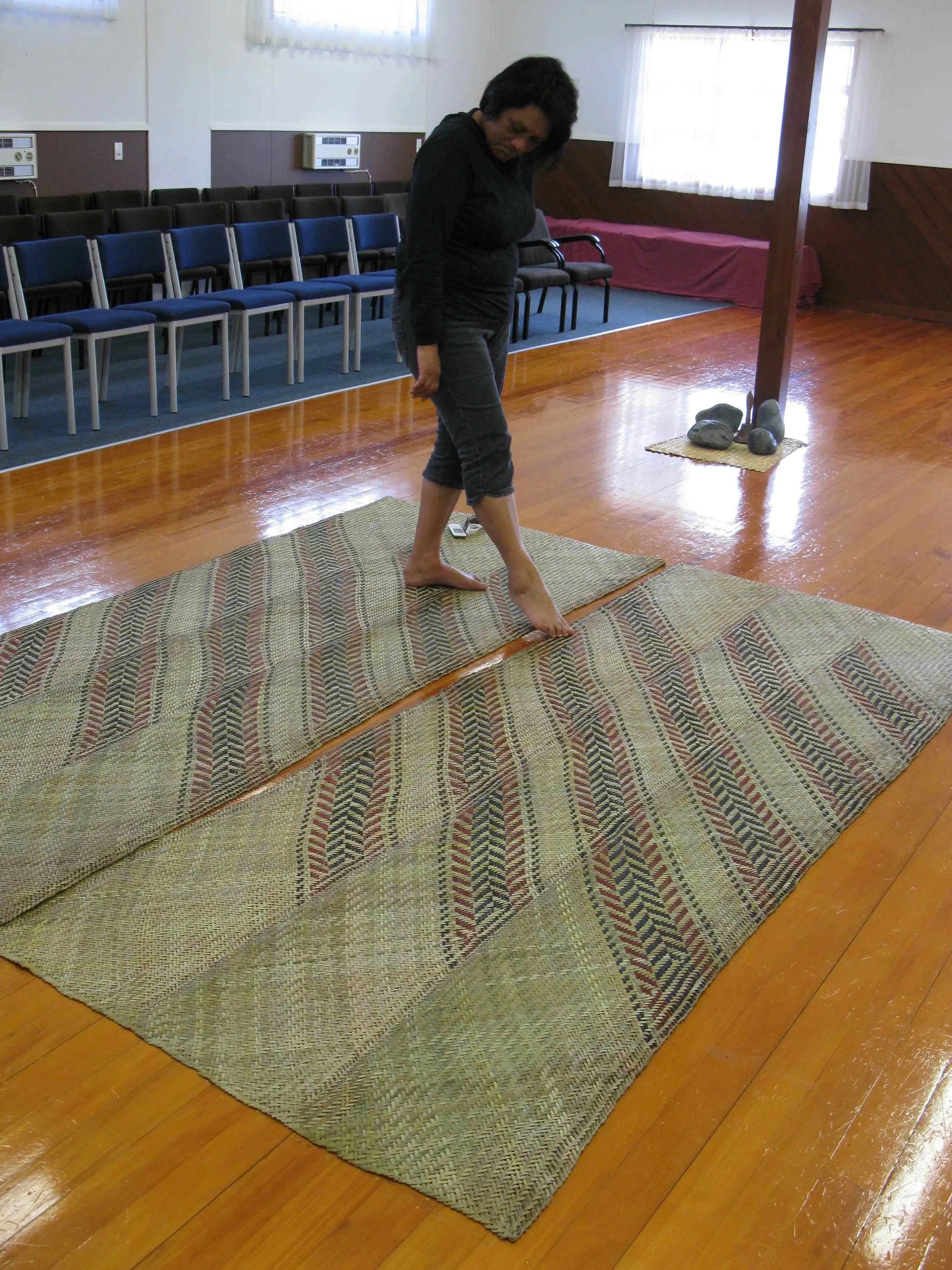Newly-created taonga adorn NorthTec wharenui
Written by

Fifty-sixty people gathered each day during the first week of the term break at NorthTec’s wharenui recently to take part in a wananga led by a group of visiting raranga (weaving) artists called He Muka Rerehau (“Fibre in the Wind”).
Fifty-sixty people gathered each day during the first week of the term break at NorthTec’s wharenui recently to take part in a wananga led by a group of visiting raranga (weaving) artists called He Muka Rerehau (“Fibre in the Wind”).
Members of He Muka Rerehau travel around the country at the request of marae that need assistance with adorning their wharenui. “There are a group of us who answer the call,” said Ria Davis from Edgecumbe. “The original kaupapa was that the raranga wananga would provide learning for the whanau on marae so that the raranga skills wouldn’t be lost.”
NorthTec students from Kaitaia, Kaikohe and Whangarei joined the visiting artists to work on two large tapapa (mats) which were then gifted to NorthTec for use in its wharenui. “3,000 strands of harakeke were used in each tapapa,” said NorthTec tutor and He Muka Rerehau member Te Hemoata Henare. “Each blade had to be picked and prepared before it could be used. It was a huge amount of work.”
Mary-Anne Rua from Kawerau is another member of He Muka Rerehau. “The kaupapa of the wananga is to decorate the wharenui but also that the mats will be used as inspiration for the raranga, arts and te reo students here,” she said.
Arthritis and sore backs are occupational hazards for the participants, so hour-long periods working with the harakeke (flax) were interspersed with Tai Chi and Kapa Haka.
That being said, working with harakeke also provides great therapeutic benefits – emotionally, spiritually and physically. “It can be wonderful rehabilitation,” said Ria. “It gives people a sense of hope and achievement.”
The group receive no payment for their work but are accommodated and fed during the wananga, in this instance thanks to funding in the form of a NorthTec’s Student Success Grant. “Our motto is no politics, no money,” said Ria. “It’s all about wh?naungatanga.”
Local tutors give guidance to the group in terms of the patterns that can be incorporated into the tapapa so that they are appropriate for each place. “We pick up patterns in the existing kowhaiwhai or tukutuku panels,” said Ria.
“This is the first time that a tapapa wananga has been held in an institution’s marae rather than a marae directly connected to a member of the group,” said NorthTec tutor Lorraine King. “As a result it is intended that students be allowed to lift up the tapapa to see how they have been made – something that would be frowned upon on most marae.”
The He Muka Rerehau group is carrying on a kaupapa first established by Koroua Edward Poraumati Maxwell, an original member of Nga Puna Waihanga and a member of Te Raranga Whatu O Aotearoa, until his passing in May last year. Nga Puna Waihanga was a collection of artists from a variety of art forms who travelled around the country to adorn and dress marae.
When the group broke up, Mr Maxwell carried on the kaupapa with the raranga work, with current He Muka Rerehau members Te Hemoata Henare and Kuti Wera Te Maipi amongst his students.
The He Muka Rerehau group was established in 2004 to carry on Mr Maxwell’s kaupapa and now spends one week every school holidays working at marae. They are in such demand that bookings are made a year in advance. “Our next wananga is in Ruatoki,” said Te Hemoata, “and after that we will be going to Waikaremoana.”
The NorthTec wananga attracted record numbers with more than 30 people contributing their skills to the finished tapapa. Other participants were taught how to make kete and placemats. “That’s the most weavers we’ve had at any of our wananga.”
12-15 marae were represented at the wananga throughout the week. Tutors and students from NorthTec’s applied arts, te reo and the raranga programmes participated. “It’s the first time that the group have involved tutors from other art forms – it took the wananga back to its Nga Puna Waihanga roots. It also allowed us to build up a sense of whanaungatanga with our Te Puna colleagues and within NorthTec as a whole.
“NorthTec has now been gifted these taonga to be held in our Whare in a learning environment where our students can be inspired by them.”
NorthTec’s acting Programme Leader for Applied Arts Kura Te Waru-Rawiri was present to accept the taonga on behalf of NorthTec. “It was very moving to hear how students had been affected by their experience at the wananga. We are very fortunate and privileged to have had He Muka Rerehau as our guests.”